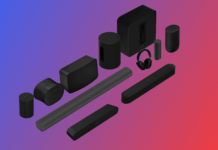Asetek is a company that should ring a bell for anyone with at least minor overclocking experience. The company was founded on the idea of bringing advanced cooling to the ordinary user. We got the chance to ask Asetek CEO and founder André Sloth Eriksen a couple of questions about his past, Asetek and the future.
Asetek is best known for its enthusiast cooling products like the phase change cooler series VapoChill and the water cooling kits known as WaterChill. The key was always to make great cooling accessible to the crowd, make it easier for more the regular people to use more extreme cooling. It shouldn’t take an engineering degree just to install a water cooling kit.
A while back Asetek made a conscious decision to move away from the retail channel and use its knowledge and IP (intellectual property) in a different way. The first step was to design the Low Cost Liquid Cooling (LCLC), which has already been adopted by several OEMs and PC builders. The goal was to build an efficient, yet inexpensive cooler that would also be maintenance-free. Especially the latter is important for OEMs.
We got a chance to talk to Asetek CEO and founder André Sloth Eriksen and ask him some questions. Not just about how things are going at Asetek at the moment, but also about the past and his own personal view of what really happened, if he’s keeping in touch with his roots and how it all started.
[NordicHardware]: Could you give us a short introduction of yourself?
[Andre Sloth Eriksen]: Well since this is for Nordic Hardware, it is probably appropriate to state that I am Norwegian, raised in Denmark and live in Silicon Valley.
I have an education as a tool maker and therefore I know quite a bit about molding and stamping tools, turning, milling, welding, CNC machining, manufacturing etc. After making tools got boring I took my engineering degree, got a job at Danfoss (yes the compressor manufacturer) as a management trainee, left after a year and officially started Asetek as a corporation.
Since then I have taken several executive management programs, went to MIT doing entrepreneurship etc. I have driven Motocross for 9 years, done wind surfing just as long (sadly I do not have time for it anymore), I love to ski and build Harley’s (custom choppers) and all kind of extreme hardware, super cars and racing 🙂
 |
 |
 |
 |
 |
 |
 |
 |
Click to enlarge
[NH]: How did you come up with the idea of making phase change coolers for a living? Were you actually challenged to build a faster computer?
[ASE]: As stated above, I love speed, fast things and hardware (expensive combo unfortunately) while I have never been much of a gamer. While studying at the university I spent ALL my money on hardware. I would rather eat red sausages for a week than avoid getting the latest and greatest hardware. I had a Pentium Pro 180 overclocked to 250MHz, Adaptec SCSI Ultra Wide controllers, 10K RPM (!) drives etc. It was probably a 10-15K$ PC just for the fun of building and installing it. It was mainly used for Word 🙂
My group mates loved to game, which was not really my big thing as stated, but I did some Red Alert and Rally over Coax LAN though. I remember I got a version of MotoRider which we also played in network. The funny thing was that I could always beat one of my group mates, although we both knew that he was a far better gamer.
Then we swapped PC’s and guess what, he lapped me within 3 laps. So the conclusion was, that the faster PC you got, the faster you could go! THAT started the whole thing, as I then started to search for the best cooling method to get highest overclock.
[NH]: How do you feel when you read around and find that others are also building phase change coolers, sometimes two or even three stage cascades, to cool their rigs? (You can’t deny that it somehow makes you feel a bit warm inside)
[ASE]: To be honest the cascade and liquid Nitrogen thing does not really turn me on. Instead of trying to get the fastest overclock it is more about building the craziest cooler, which is just another thing. In fact I don’t like the idea that I have to transport my PC on a trailer, and only being able to run it for a few minutes at the time. I prefer looking at overclocking within the framework of a PC. While not turning me on, I can easily imagine why others think it’s cool though.
[NH]: So, what is the craziest cooler you’ve ever built?
[ASE]: Wrt. cooling we have also built pretty crazy systems in our labs just for the fun of it. However we have thermal chambers that go down to -80, and if you put a VapoChill in there, you will get pretty low temperatures, so we do not really have to use extreme setups. Such a thermal chamber costs $100,000 so it is obviously not something that private users just happen to have. I would assume a deep freezer with a VapoChill inside would also go far 😉 I know some on our engineering team are starting up an internal "Asetek overclocking club" to make some use of all high end hardware and have some fun.
[NH]: In 2003, Asetek presented the WaterChill product line, what made you decide to broaden your assortment with water cooling products?
[ASE]: We had looked at liquid cooling for quite some time. Most systems at the market required a craftsman to install it, and performance was poor. We saw an opportunity on leveraging our brand, getting higher volume and provide end user value. As you can read in my blog it was a great success.
[NH]: One year later you introduced the Antarctica CPU block and in 2005, the integrated pump and reservoir that could be controlled through USB and software. This was the last real retail products you launched. Do you hope to return to the retail channel or will you instead work through partners?
[ASE]: Good question. When we look ourselves in the mirror we know that we are good at making coolers, and that’s what we will continue to do. I do not find it likely that we will return to the channel market as a brand, but I find it very likely that some of our products will be sold retail through partners.
[NH]: The same year you launched the VapoChill Micro, you seemed to be moving towards less and less powerful cooling?
[ASE]: You know every time you go more extreme you get a smaller and smaller market. Although being passionate, we also had to remember we were a business 🙂 We already had the VapoChill, and using even larger compressors etc. was not the way to go for us.
[NH]: Looking back, it actually seems like the demand for extreme cooling, such as the VapoChill series, was declining, even though the DIY market was growing faster than ever. Care to comment?
[ASE]: I actually disagree that the DIY market was or is growing. Just a few years back there was a DYI computer store on every corner. More and more people are actually buying pre-assembled stuff. I know from the CPU sales figures that the number of enthusiast CPU’s sold is pretty solid, but has turned more towards OEM/white box manufacturers.
That being said I also think that the cascade and LN2 stuff had a bad impact on the VapoChill sales. It was still the tool to get a high benchmark score, but by no means a record breaker anymore.
[NH]: The only kind of cooling you haven’t worked with directly with is air cooling, seeing as the VapoChill Micro is based on “Vapor Chamber Technology”. How come?
[ASE]: We like to see ourselves as a thermal management company, and not just a liquid cooling vendor. For instance the Nvidia 8800 GTX hybrid cooler has both a liquid cold plate and an air cooled part with heatpipes and fins. Everything designed in Denmark, so we certainly have the capabilities.
The thing is that we have to have another value add than just a low cost. It is actually not that hard to design a high performance heatpipe CPU cooler, but we would never be able to compete on cost with for example Foxconn, meaning that we could not make money on it. With the LCLC we are lower cost by design, and that is covered by a lot of IP meaning that we can actually outperform other big players on cost and still make money.
[NH]: I know I am being a bit of a heathen here, but did you ever think of designing an “ordinary” CPU cooler?
[ASE]: As you can read above – no I don’t think so. What you call ordinary is what I would call commodities, and that is not our game.
[NH]: Your main priority right now is the Low Cost Liquid Cooling (LCLC). We’ve seen it in action inside the HP Blackbird, but this is a fairly expensive high-end gaming rig, which not too many can afford. Can you tell us if there is going to be any enthusiast-oriented but more affordable computers using the LCLC?
[ASE]: The HP Blackbird is great piece of engineering and is in my view the best gaming PC out there with liquid cooling of both CPU and graphics, I got one myself and I love it. Yes it comes at a price, but in my view you get value for your money. For people not willing or not capable of spending this amount of money you can buy Asetek engineered solutions from several other PC vendors, also in Scandinavia:
Komplett has one system , XMX.de has a 699 Euro gaming machine with liquid cooling. Packard Bell, Zykon systems, 3XS, Armari, XtremaPC [all have machines] a nd for the DYI users, that do not want to buy a pre built machine you can actually buy it from NorthQ enabling you to have genuine Asetek liquid cooling in your home brewed rig but with OEM grade reliability.
What you have seen now is only the beginning 😉
[NH]: You worked closely with both ASUS and Abit in building the fastest PCs on Earth. The HP Blackbird was certainly close to that, but not as extreme as the previous systems. Do you have any plans on bringing the truly extreme systems back? Or is it just a wet dream of ours?
[ASE]: Haha I’m afraid so! The problem was that both ASUS and ABIT sold a lot of motherboards off this, but unfortunately we did not really sell a lot of VapoChill’s… With HP it is different. Every time HP sells a (liquid cooled) Blackbird, we sell a cooler. Win-win. However never say never. We see some interest in the OEM space, so who knows 😉
[NH]: We know that you’ve been working on the LCLC for a long time and that you’re very pleased with its performance, potential and usability, but we have to ask what you’re embarking on next, LCLC2? Something completely new?
[ASE]: Yes and Yes! And it will be amazing. Could you imagine having high end liquid cooling performance in the LCLC form factor, factory sealed and with 6 years maintenance free life time at a low cost? Our roadmap going forward is packed with new products within CPU and GPU cooling applicable in a variety of segments.
[NH]: You recently launched a water block for the GeForce 9800 models, which was actually designed for OEM use. Can we count on Asetek delivering more products like these, I.e. water blocks for different components for OEMs to implement?
[ASE]: You bet!
[NH]: There’s a big difference as to how most enthusiast use phase change cooling today, with how you used phase change cooling back in the early years. Today it’s used by many to reach extremely low temperatures for fairly short periods of time, instead of low temperatures with your regular computer.
The everyday use of phase change cooling seems to have almost disappeared. Have you ever thought of bringing the market back to life with perhaps a mid-range VapoChill model optimized for capacity instead of low temperatures?
[ASE]: Seems as you agree with my statements above… Hmm well yes, the problem is that the cost difference of the compressor etc. doesn’t really vary that much with performance. In fact the higher capacity compressors are oftentimes cheaper because they are made in higher quantities. The most elegant compressor cooler ever made if you ask me, was the XE series with its 12V compressor, PWM regulation of the compressor and fans etc. Funny to see that most of the features we had back then are now called "new" again, a.k.a. ESA.
[NH]: Do you still consider yourself an enthusiast? In the same sense as when you started Asetek? Do you still find the time to play around with hardware?
[ASE]: Yes. As I’m literally walking in extreme end hardware daily however, I don’t get the same kick out of it as earlier though. But yes I still play around with hardware and overclocking, and when some of the young guys at our team can’t get it to work, I still step in and refer to the good old day when I overclocked a Pentium II to almost double speed 🙂
[NH]: Last but not least, you said something that really stuck with me during one of our previous conversations. The reason you’re keeping the VapoChill series alive is not so much because it’s profitable, but because it just means so much to you?
[ASE]: Well we do in fact make money every time we sell a VapoChill so it is not losing business, but the market size doesn’t really justify it. However any other company, Kryotech, Chip-Con, Maxxpert and whoever tried this failed. We have a good product, and because it is our heritage (and because I invented it myself 🙂 ).
I remember a couple of years back in the Apple store in Palo Alto. Because it was Apple’s first store I came to think about VapoChill because it was our first product. I made a Google search on VapoChill in the store and got more than 4 million hits! It’s probably lower today, but we are actually proud about this and the 200 press awards the product got.
Another funny thing is, that no matter where we go even in the OEM space, people know VapoChill, and most often people start smiling when talking about it. A smile is always a good way to start a meeting…
So yes – money aside there is still common sense behind keeping it on the shelves.
[NH]: Do you have anything you would like to add to the interview?
[ASE]: I would like to say thank you to our thousands of loyal customers around the globe, and we look forward to serving you in the future as well. Although through another channel, it is still an Asetek-engineered solution inside!





















